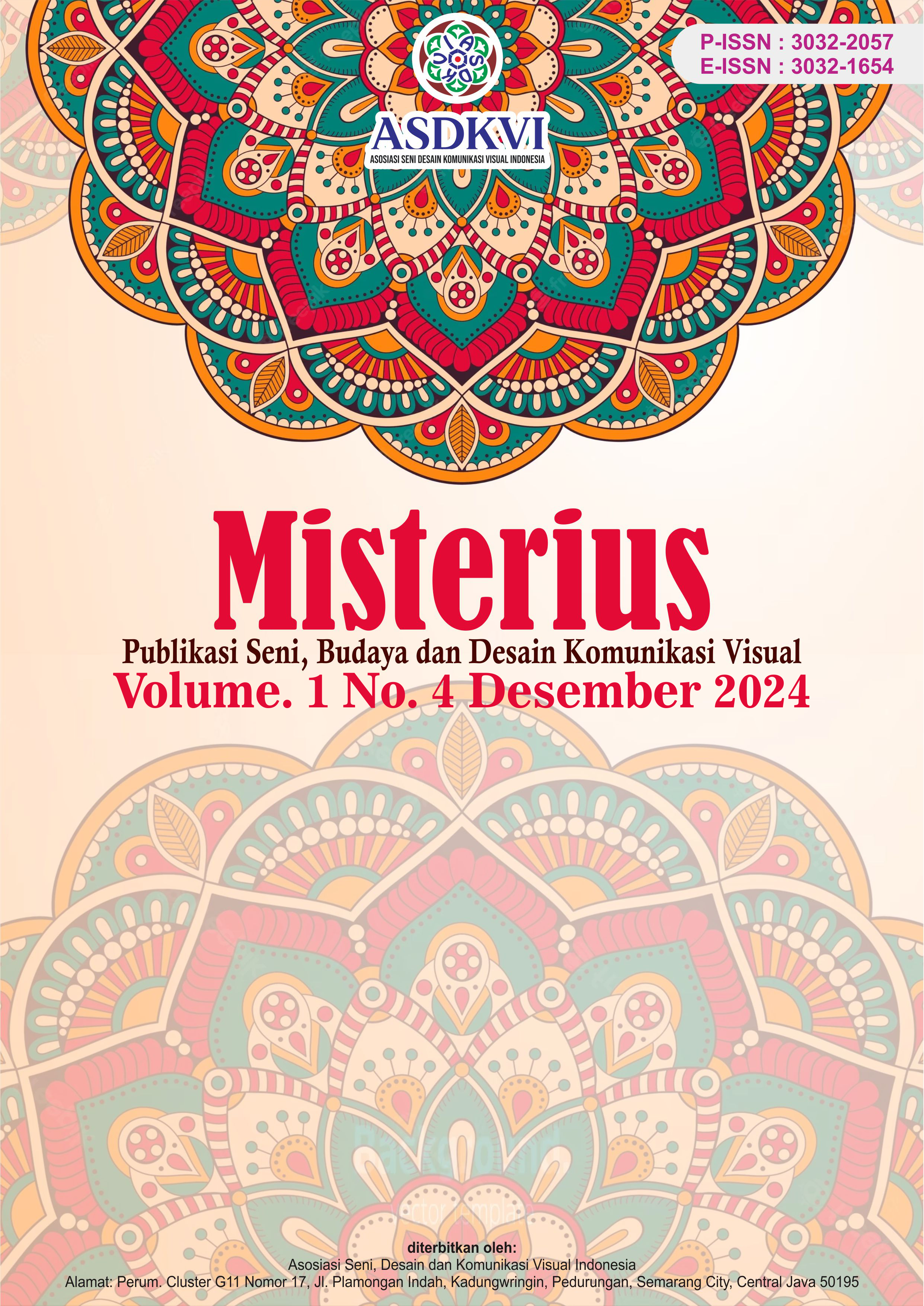Analisis Pola Iringan Gambang dalam Kesenian Tembang Sunda Pagerageungan
DOI:
https://doi.org/10.62383/misterius.v1i4.483Keywords:
Sundanese Song Pagerageungan, Accompaniment Pattern, XylophoneAbstract
Sundanese song pagerageungan is a traditional art originating from Tasikmalaya district. The xylophone accompaniment pattern in the Sundanese song art Pagerageungan plays a very important role in creating an atmosphere and strengthening the message contained in the song lyrics. The xylophone, as a traditional Sundanese instrument made from wooden blades, produces a distinctive sound and has a dual function as a rhythm regulator as well as adding melodic nuances to the song. The xylophone accompaniment pattern in this song is not only rhythmic, but also often has a melodic character that beautifies the song's strains. This gambang accompaniment pattern has 3 parts, namely merean, cacagan and geumbyang. The aims of this research are: (1) to find out the xylophone accompaniment pattern in the Sundanese pagerageungan song art (2) to find out the function of the xylophone accompaniment pattern in the Pagerageungan Sundanese song art. The method used in this research is qualitative with a descriptive analysis approach. The techniques used in this research are observation, interview and documentation techniques. The main instrument in this research is the research itself using tools in the form of field notes and recording tools in the form of cellphones.
References
Almursalaat, A. A. (2019). Pola Tabuhan Gendang Dalam Musik Iringan A’baruga Di Kecamatan Bantaeng Kabupaten Bantaeng (Disertasi Doktoral, Universitas Negeri Makassar).
Basuki, S. (2003). Pengantar Ilmu Perpustakaan. Jakarta: Universitas Terbuka.
Gunawan, I. (2014). Metode Penelitian Kualitatif, Teori & Praktik. Jakarta: Bumi Aksara.
Herdiansyah, H. (2014). Metodologi Penelitian Kualitatif untuk Ilmu-ilmu Sosial. Jakarta: Salemba Humanika.
Martopangrawit. (1975). Pengetahuan Karawitan 2. Surakarta: ASKI.
Natamihardja, D. R. (2009). Ngaguar Mamaos Cianjuran. Cianjur: Lembaga Kebudayaan Cianjur.
Rahayu, R., Olendo, Y. O., & Muniir, A. (n.d.). Analisis Pola Tabuhan Beruas pada Musik Iringan Tari Jepin Langkah Bismillah di Kelurahan Siantan Hilir Kecamatan Pontianak Utara. Jurnal Pendidikan dan Pembelajaran Khatulistiwa (JPPK, 10(4), 2097-2104.
Supanggah, R. (2009). Bothekan Karawitan II. Surakarta: ISI Press.
Sedyawati, E. (1981). Pertumbuhan Seni Pertunjukan. Jakarta: Sinar Harapan.
Sedyawati, E. (1983). Seni dalam Masyarakat. Jakarta: Sinar Harapan.
Sugiyono. (2017). Metode Penelitian Kuantitatif, Kualitatif, dan R&D. Bandung: CV Alfabeta.
Sugiyono. (2020). Metode Penelitian Kualitatif. Bandung: Alfabeta.
Sumardjo, J. (2000). Filsafat Seni. Bandung: ITB.
Syuryati, F. D. (2017). Aqmancaq dalam Pesta Adat Gantarangkeke di Kecamatan Gantarangkeke Kabupaten Bantaeng. Makassar: Universitas Negeri Makassar.
Tambajong, J. (1992). Ensiklopedia Musik Jilid II. Jakarta: Cipta Adi Pustaka.
Downloads
Published
How to Cite
Issue
Section
License
Copyright (c) 2024 Misterius : Publikasi Ilmu Seni dan Desain Komunikasi Visual.

This work is licensed under a Creative Commons Attribution-ShareAlike 4.0 International License.





